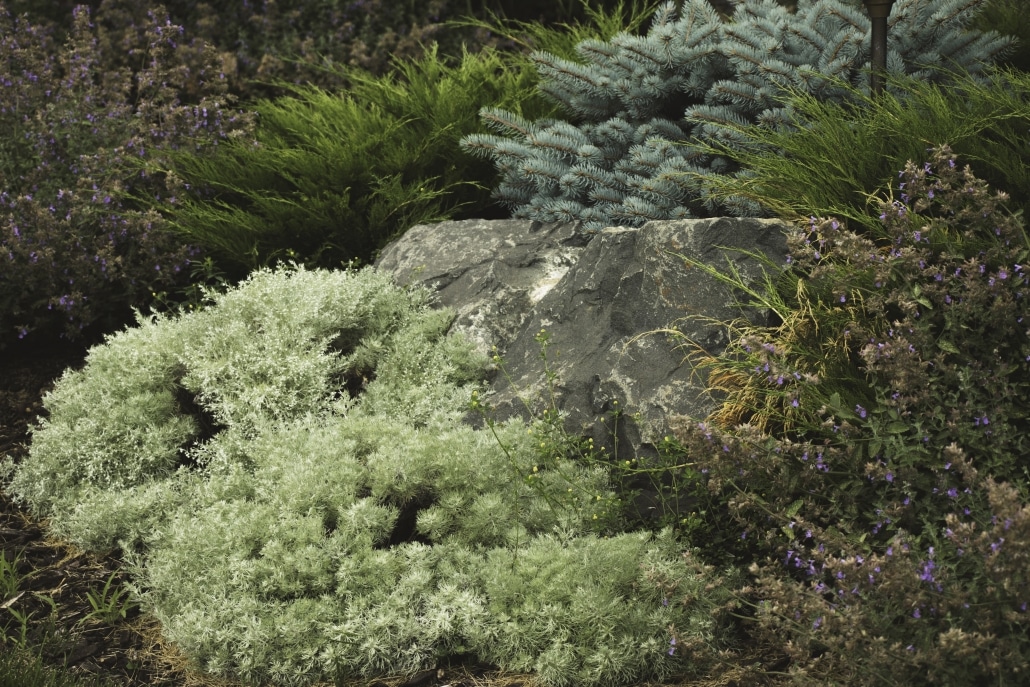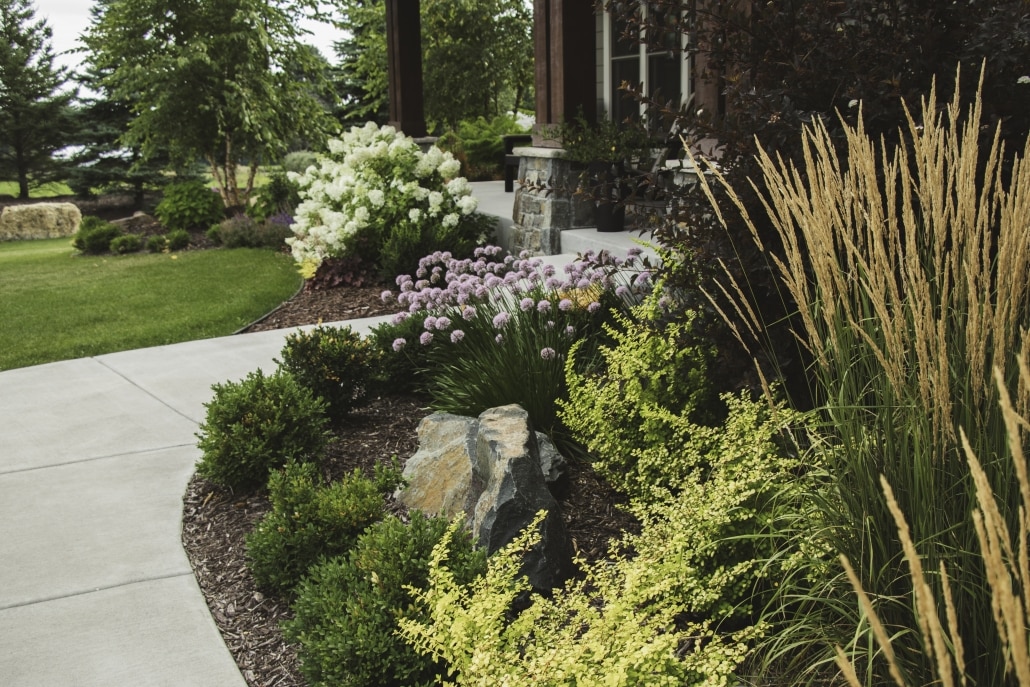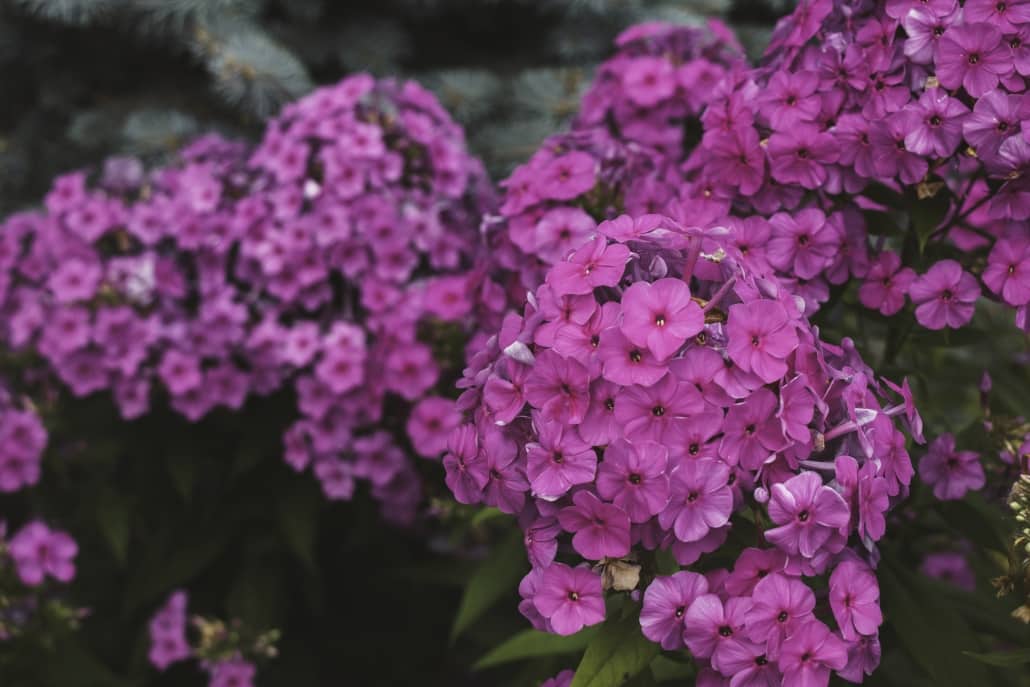Color is the most temporary characteristic of plant material, yet it is also the one that carries the most visual weight in a planting design. Planning with color is difficult because seasonal changes, light intensity, texture, and color properties and relationships (color theory) must all be considered.
A good strategy is to design the entire plan, including the focal points, with form and texture as the first consideration and then use color for additional emphasis if needed. The composition in a garden should be balanced and visually pleasing with or without color.
Texture in Planting Design
Texture is created by a combination of the size and shape of the leaves and stems with the overall form. Plants have coarse, medium, or fine texture that can change with the viewing distance. The lighting, and the contrast with surrounding plants.
Coarse texture tends to have the strongest visual weight. Too much coarse texture with many different forms can create a chaotic look. A lot of fine texture can be too monotonous. The key is to create balance in the composition by using one texture, usually coarse, as a focal point and other textures, typically fine and medium, to fill the spaces. However, an interesting and dramatic landscape can be created with all coarse textures if balanced with color and a form.
Use texture to change the perceived size of a space. Place coarse texture in the background, the tallest layer, to make a space feel smaller, or bring the coarse texture closer to the foreground layer to make a space feel larger. Use texture in the background layer to emphasize other plants or garden ornaments. Fine texture in the background makes coarse texture stand out more, and coarse texture in the background makes fine texture look more delicate.

Fine Foliage
- Grasses
- Allium
- Fern
- Coreopsis
- Dianthus
- Perovskia
- Nepetas
- Hemlock
- Larch
Course Foliage
- Hostas
- Heuchera
- Peonies
- Sedum
- Hydrangea
- Beard Iris
- Ginger
- Stachys
- Magnolias
- Rhododendrons
COlor In PLANTING Design
Color has many uses in garden design. Bright, warm colors create a sense of action and excitement. Cool colors and pastels lend a calmer feeling and single-color designs have a tendency to create a sophisticated look.
When choosing plants for color and deciding upon location, use a color scheme as a guide. Analogous colors are similar and tend to have a unifying effect. Complementary colors have high contrast, so the amount of color is usually just as important as the location. Also keep bloom periods in mind and try to balance the location and amount of color throughout the year.
When locating plants for color, avoid scattering different colors in small clumps or spots throughout the garden. Color should flow through the layers from top to bottom and front to back to avoid lines or clumps of color. Repetition in color comes from the use of a particular color or set of colors more so than the location of the color.
If you want to make a front yard bigger, blues and cool colors should be planted on the foundation of the house. Plant warm colors on the foundation to make the space feel smaller.
Color can increase the visual weight of a plant, which can lead to an unbalanced composition. When using color for a focal point, exercise caution with the color choice if the plant already has high visual value. Consider all parts of the plant, flowers, fruit, bark, and stems as possible sources of color. This forces you to consider varying amounts of color in the garden year-round.
The award winning designers at Landscapes Unlimited can help you select the right cohort of plants to create a dynamic design for your property. We offer design, install, and management services to help you make your dream landscape a reality.
For more information on planting design…
ESSENTIAL THINGS TO CONSIDER WHEN PLANNING YOUR GARDEN’S COLORS
TOP 10 PLANTS FOR WINTER INTEREST (THAT AREN’T EVERGREENS)
SPRING ETERNAL: YOUR GUIDE TO SPLENDID SPRING BULBS



